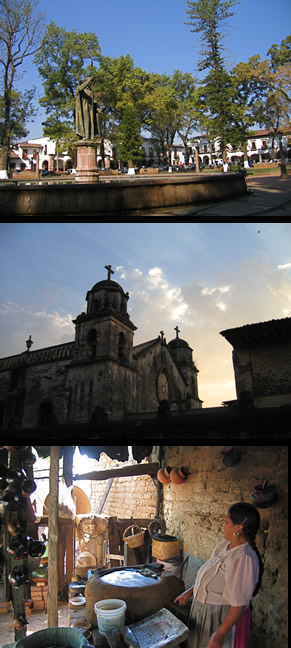

Calling Home the Dead is easily the best film on Day of the
Dead that I have ever seen. The filmmakers offer a subtle, visually
stunning, poetic invitation to experience the beauty and meaning of this
spiritual celebration as it unfolds over several days. With minimal but
thoughtfully crafted narration, this voyage in richly evocative images
and sound emphasizes indigenous practices during el Día de los Muertos,
an invaluable perspective, seldom seen outside of Mexico.
Alice A. Nelson, Ph.D.
Professor, Latin American Cultural Studies,
Spanish
The Evergreen State College
“...it’s really beautiful and lush and I appreciated all of the context it
provided to the holiday. I also really loved the Spanish narration....”
Kelsey Smith.
Librarian, Olympia Timberland Library
"The documentary Calling Home the Dead opens at dawn with a ghostly view of the Island of Janitzio in Lake Pátzcuaro in the state of Michoacán. The day is November 1, and the year could be this one or a year that predates Columbus. The Day of the Dead is about to begin, in which townspeople clean and repair gravestones in the local cemeteries, create arches made of marigold blossoms as fat as your fist, and prepare to communicate with loved ones who have passed on to a new life. Filmmakers Jim Hill and Meesh Rheault Miller patiently and quietly capture the sights, smells, sounds, and tastes of the celebration, making the viewer feel central to the ritual, and as if the throng of tourists simply have forgotten to show up.
The script is quiet—informative and lyrical. Narrator Patricia Vásquez delivers the message of el Día de los Muertos tunefully, as an ancient bard transports words. She intones the local customs. She calls attention to the baskets, candles, embroideries, flowers, and food set out in the plaza grande, things that give “memories a tangible form.” Underlying the voiceover is original and often otherworldly music by Dustin Miller; then suddenly a strumming guitar is heard, a litany of prayers, a vigilant rooster, or a rocket piercing the heavens to awaken the spirits.
We are witness to a spiritual event. Citizens grieve their losses, young and old, transforming overgrown gravestones into festive shrines of incense, bread, toys, and sugar skulls. The narrator reminds us that somber observance forces death to shed its tragic cloak as families and friends find solace in work and in waiting. Calling Home the Dead reverently evokes this patient waiting, with villagers gathered in the light of hundreds of candles in surrounding cemeteries. Neighbors whisper, sing, chant, and pray, waiting for a sound, a flicker of wind, a presence felt because their “hearts are open” to the yearly return of the departed.
The subjects in the film appear unaware of any cameras. Like Dorothea Lange, Hill and Rheault Miller seem possessed of the power to be invisible. As such, Calling Home the Dead is not a film filled with historical explanation and editorial commentary, but rather a meditation on human nature, traditions of remembrance, and building bridges between our lives and the lives that breathe within us."
Author, Thinking and Writing in the Humanities
Instructor, University of Colorado-Boulder